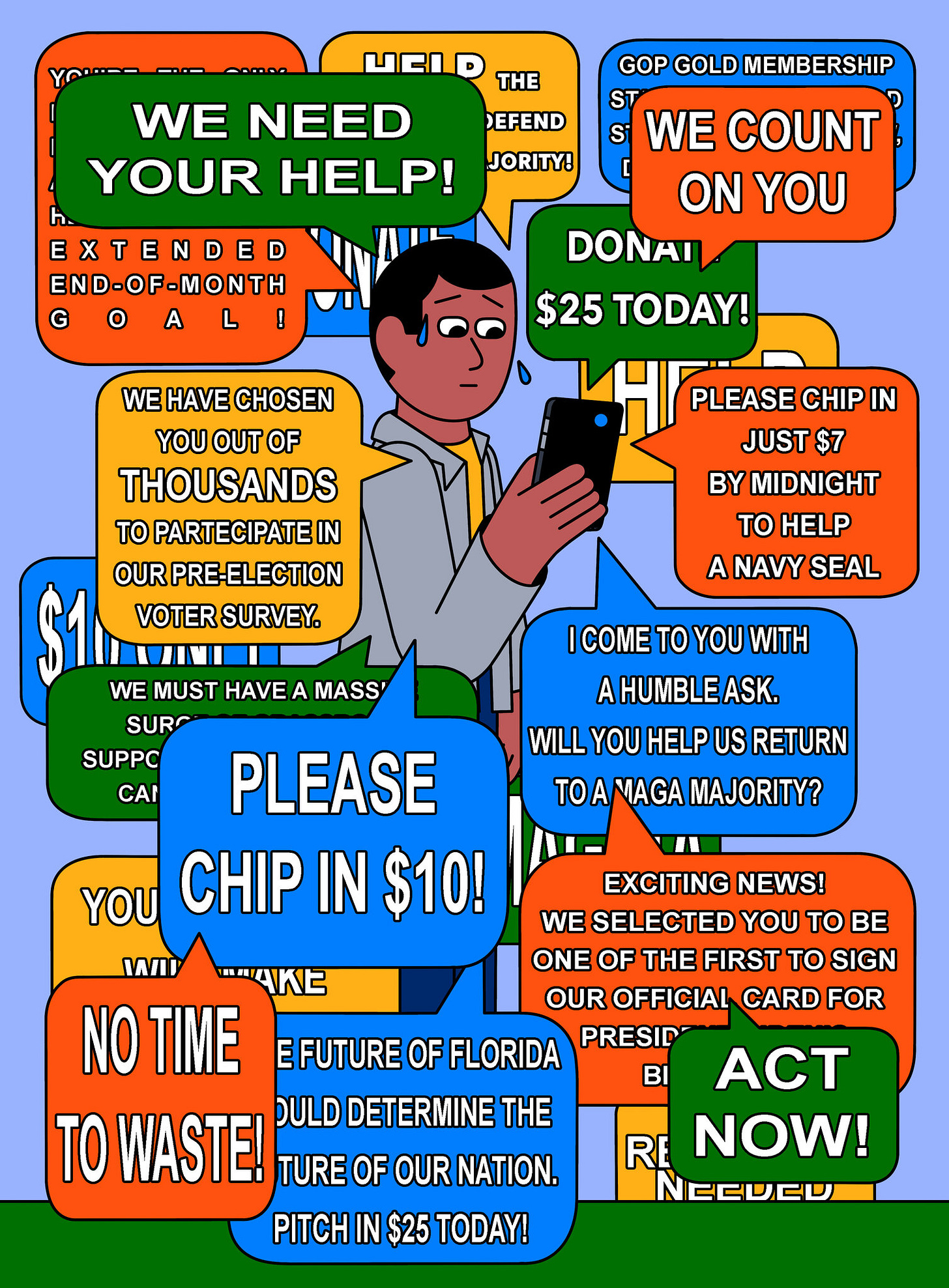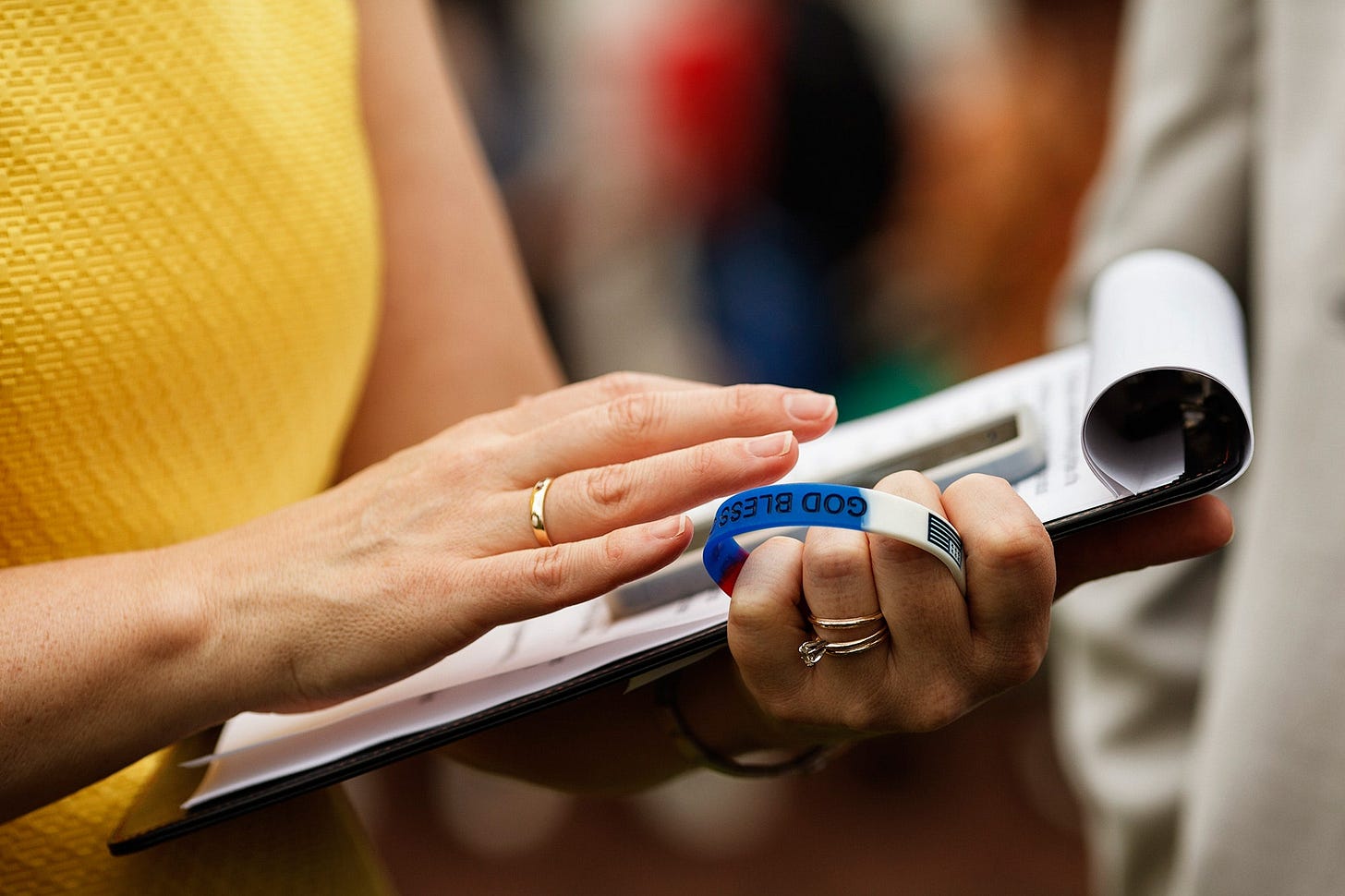By Steve Schear
Democratic pundits and media personalities love to debate the “best” messages to move voters. Freedom? Democracy? Donald’s age and instability? Perhaps abortion, tax cuts, climate, jobs, immigration? This is a crucial question for media consultants creating ads to be seen by millions. When canvassing, however, there is no “right” message.
It Depends on the Voter
It all depends on who you are talking to. A canvasser’s ability to individualize messages at each door is a huge advantage in winning votes and volunteers.
Eleven weeks before the election, we can be working in battleground states to persuade the undecided to vote our way and get our solid supporters to volunteer. But the issue that moves them will vary. That’s why it’s wise to begin canvassing by finding out what is important for the person at the door.
“What’s going to be most important to you when deciding how to vote?” “How are you feeling about the Democrats versus the Republicans?” “What do you think about Trump and Harris?” or “What problem keeps you up at night?” followed by “Why do you feel that way?” — all can get a person talking. After people open up a little, we can engage them in a conversation about whatever issues are most important to them, and why voting for Dems is in their interest.
Move the Voter Using Issues They Care About
We don’t need to stop there. We can also move the conversation to issues we think will appeal to different groups. With lots of women and some men, “How do you feel about abortion access?” is often best. With older folks, starting with the Medicare improvements Dems won (capping insulin costs, negotiated drug prices, a $2,000 cap on out-of-pocket drug costs) usually works. With younger working class voters, asking about Donald’s plan to eliminate Obamacare can prove fruitful. With some, asking if they believe in climate change is effective. With the many concerned about prices and inflation, talking about Donald’s tax cuts for the rich can move them to our side.
Deep Canvassing With a Message of Love
A very different, but effective approach is the deep canvassing pioneered by Dave Fleischer. This method focusses on a single message - love. Canvassers begin by telling a story about what motivates them to canvass, a story about someone they love. Then they ask the person to tell a story about someone they love. Use the two stories to show the common bond between voter and canvasser - caring about others — they finish by talking about how Trump doesn’t care about others. So vote for Harris.
Deep canvassing has been proven to work. To be effective, however, the method requires special training. Changing The Conversation for Progress (CTC) is currently doing training for deep canvassing in Philadelphia. For more information about CTC’s program, go here. Dave's Substack, written by Fleischer, also has helpful articles about how to deep canvass.
What’s In a Name?
Speaking of messaging, you may have noticed that I mostly refer to Trump as “Donald.” There’s a reason. Just one day after I bought a “Cool Cats for Kamala” T-shirt, I got an e-mail urging all of us to call our candidate “Harris,” because using first names can diminish the stature of women. Then I heard Harris refer to Trump as “Donald.” So sometimes I call Trump “Donald” because it diminishes his stature and “strong man” image and makes it easier to poke fun at his meanderings and lies. It may not always be the best idea, but I suspect with undecided folks it works well. If you have thoughts about this, please let us know with a comment below.
Emotional Language Is the Key to Success
Canvassing is not hard. You don’t have to be an expert on every issue to be effective. Emotional language is the key. If you are friendly, interested, and open with the person at the door, you convey a powerful nonverbal message — that Democrats are cool and care about voters, not just votes. That kind of feeling is more likely to get them to vote our way than any spoken words.
When stumped by a question or uncertain how to respond to a comment, ask other canvassers how they deal with that issue or research the answer. The next time you get a similar question or comment, you’ll be ready. The more canvassing you do, the better you’ll get. That’s one reason why canvassing for a week or more this fall will be especially impactful. It doesn’t take 10,000 hours to be a really good canvasser, more like 10 or 20 hours.
Aunt Anne and Uncle Sam Need You!
From now to November 5, canvassing should be fun, especially in mocking the comments of Donald, JD, and the MAGA/Christian nationalists. You can join the fun by signing up to canvass in swing states exurban areas for $250 a day with the Progressive Turnout Project here. Or sign up to canvass with financial support for housing and transportation through Seed The Vote here. Or canvass in battleground cities, Ohio and Montana through Swing Blue Alliance’s new Canvassing Connector.
We need an army of canvassers in battleground states to win this election, so enlist today.









Do you have a contact for canvassing in Pennsylvania? A number of people have asked me and I would like to connect them!
Agree 100% about using first names can diminish a candidate, especially women. “Donald” takes him down a notch and much preferable to “Trump”.
When I was hired at my first job I told the secretaries, who were all women, to call me by my first name. They insisted on calling me Dr. Solomon, explaining to me that as the only woman doctor in our department it was important to not be called by my first name. They were right.